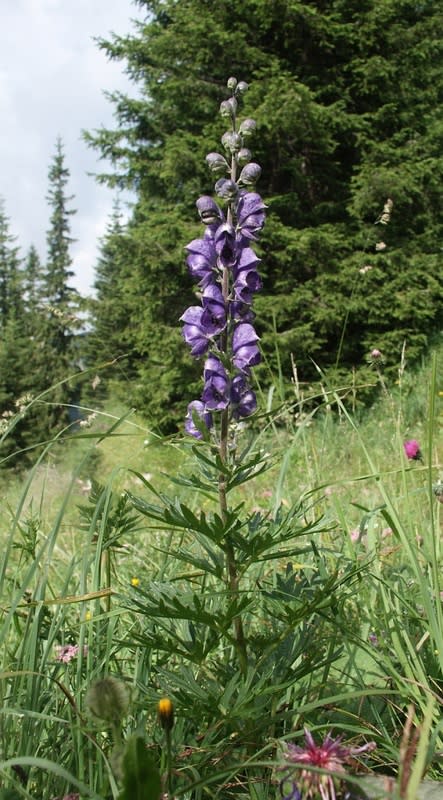Monkshood, Wolfsbane, Aconite, Blue Rocket, Devil's Helmet
Aconitum napellus

🌿 Morphology
🌞 Growing conditions
🌍 Origin and family
🌾 Uses
Warning: Despite the care taken in writing this sheet, it is essential to cross-reference sources before using or consuming any plant. When in doubt, consult a qualified professional
Permaculture uses
Aconitum napellus is highly toxic and not used for food or medicinal purposes in permaculture due to the danger of poisoning. It may be used as a garden ornamental for its striking blue-purple flowers, providing visual interest in areas where livestock and children are not present. Its toxic properties have been investigated for potential natural pest control, though extreme caution is required.
Permapeople description
Aconitum napellus, commonly known as monkshood or wolfsbane, is a highly poisonous plant species in the genus Aconitum, native to western and central Europe.
Botanical description
Aconitum napellus is a perennial herbaceous plant belonging to the buttercup family (Ranunculaceae). It grows to a height of 20-120 cm (8-47 inches), with palmately lobed, deeply divided leaves. The flowers are characteristically hooded, typically deep blue to purple, but sometimes white or pink, and are arranged in a dense raceme. The plant possesses tuberous roots that are highly poisonous. It prefers moist, well-drained soil in partial shade and is native to mountainous regions of Europe.
Companion planting
Due to its toxicity, Aconitum napellus is not typically considered for companion planting in a traditional sense. Its presence may deter certain pests but should be carefully considered due to the risk of poisoning other plants or beneficial insects through contamination.
Propagation methods
Aconitum napellus can be propagated by seed, division of tubers, or root cuttings. Seeds are best sown in the autumn or early spring and may require stratification to break dormancy. Division of tubers is best done in the spring or autumn. Root cuttings can be taken in the winter.
History and traditions
Historically, Aconitum napellus has been infamous for its extreme toxicity and used as a poison for hunting, warfare, and assassination. In ancient Greece and Rome, it was a well-known poison. It has also been used in traditional medicine, albeit with extreme caution, primarily for pain relief and nerve disorders. The plant's folklore is rich with stories and superstitions related to its poisonous nature and association with werewolves.
Usage calendar
Flowering occurs from June to September. Seeds are collected in the fall. Tubers can be divided or root cuttings taken in spring or autumn. Planting is best done in spring or fall. Pruning is generally not necessary, but spent flower stalks can be removed after flowering to improve appearance.
